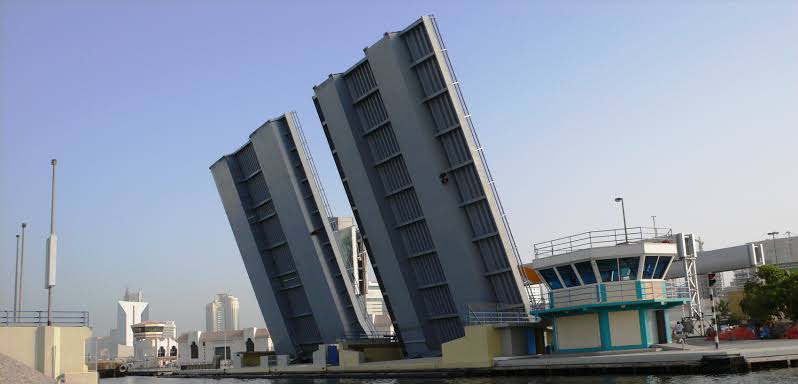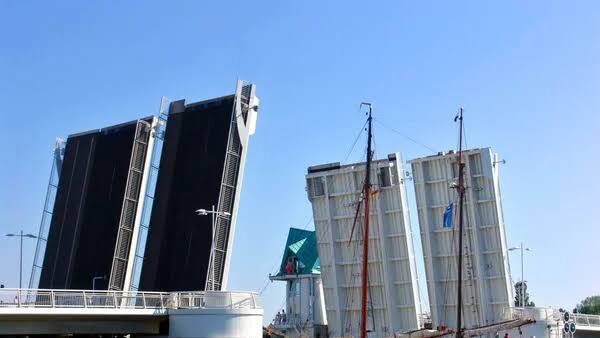Maktoum Bridge: A Gateway to Dubai’s Legacy and Growth
Maktoum Bridge, an architectural marvel and an essential part of Dubai’s evolving infrastructure, stands as a symbol of connectivity and progress. Spanning the Dubai Creek, the bridge has played a pivotal role in linking key areas of the city, facilitating trade, and enhancing the daily lives of residents and visitors.
As one of the city’s first permanent crossings, Maktoum Bridge reflects Dubai’s ambitious vision, blending functionality with cultural significance. For decades, it has supported the emirate’s rapid transformation into a global hub while preserving its deep-rooted traditions.

A Glimpse into History
Opened in 1963, Maktoum Bridge holds historical importance as Dubai’s first bridge to cross the iconic Dubai Creek. Before its construction, ferries were the primary mode of transport across the waterway. The bridge not only marked the beginning of Dubai’s infrastructural modernization but also laid the foundation for the city’s economic expansion.
Named after the ruling Al Maktoum family, the bridge embodies their vision of a united and thriving emirate. Its creation demonstrated Dubai’s commitment to establishing efficient transport networks, enabling seamless movement between Deira and Bur Dubai.


Structural Design and Features
Maktoum Bridge is an engineering feat, designed to accommodate both vehicular and pedestrian traffic. It consists of six lanes and a pedestrian walkway, ensuring smooth and safe travel for thousands of commuters daily. The bridge’s mechanism includes a swing section that allows larger vessels to pass through, highlighting its adaptability and forward-thinking design.
While newer bridges and tunnels have been constructed over the years, Maktoum Bridge remains a crucial part of Dubai’s transport network. Its strategic location ensures easy access to vital areas, including Dubai International Airport, the bustling souks of Deira, and the cultural landmarks of Bur Dubai.
The Role of Maktoum Bridge in Dubai’s Development
As Dubai grew from a modest trading port into a global metropolis, Maktoum Bridge evolved into more than just a crossing. It became a symbol of connectivity, linking the city’s commercial and residential districts. The bridge has facilitated the growth of trade by ensuring the smooth transport of goods and people across the creek, which remains a central artery of commerce.
Over the years, the bridge has witnessed countless moments of progress, from the construction of towering skyscrapers to the launch of innovative urban projects. It stands as a silent observer to Dubai’s journey of transformation, embodying the resilience and ambition that define the city.
Connectivity and Accessibility
Maktoum Bridge continues to be a vital link in Dubai’s transport system. With its proximity to major landmarks and its seamless connection to key roads such as Sheikh Zayed Road and Al Khail Road, the bridge is a preferred route for commuters.
It is also part of Dubai’s smart infrastructure, with traffic management systems ensuring optimal flow during peak hours. The Roads and Transport Authority (RTA) has implemented measures to maintain the bridge’s efficiency, including scheduled maintenance and upgrades to enhance safety and durability.
In addition to serving as a vehicular crossing, Maktoum Bridge is a pedestrian-friendly structure, allowing locals and tourists to take in scenic views of Dubai Creek. The experience of walking across the bridge, with traditional abras gliding below and the city skyline in the distance, offers a unique perspective of Dubai’s harmonious blend of old and new.
The Creek: A Living Heritage
Maktoum Bridge’s significance is inseparable from the Dubai Creek, which it spans. The creek has been the lifeblood of the city, fostering trade and cultural exchange for centuries. Traditional dhows still ply its waters, continuing the legacy of commerce that once defined Dubai’s identity.
By connecting both sides of the creek, Maktoum Bridge has enabled the preservation of this cultural heritage while supporting modern development. It serves as a reminder of the city’s humble beginnings and its remarkable journey to becoming a global hub for innovation and tourism.
Future Prospects
As Dubai continues to expand its transport network, Maktoum Bridge remains a cornerstone of its infrastructure. While newer bridges and crossings, such as Business Bay Crossing and Al Garhoud Bridge, have added capacity, the historical significance of Maktoum Bridge ensures its continued relevance.
Planned upgrades and maintenance efforts will keep the bridge in line with Dubai’s vision of smart mobility. The integration of sustainable technologies and intelligent traffic systems promises to enhance the bridge’s functionality while reducing environmental impact.
Maktoum Bridge also plays a role in tourism, as visitors seek out experiences that combine the city’s modern marvels with its rich history. The bridge offers a nostalgic journey for those who want to witness the city’s transformation firsthand, connecting them to Dubai’s cultural and architectural treasures.
Conclusion
Maktoum Bridge is more than just a crossing; it is a testament to Dubai’s visionary spirit. Its enduring presence on the city’s skyline reflects the emirate’s commitment to progress, connectivity, and preserving its cultural heritage.
Whether it’s a commuter heading to work, a trader transporting goods, or a tourist admiring the creek, the bridge serves as a gateway to endless possibilities. As Dubai continues to evolve, Maktoum Bridge stands as a proud symbol of its past, present, and future, connecting hearts, minds, and dreams across its timeless waters.
Do follow Uae stories For more updates
Al khaleej Gold rates














